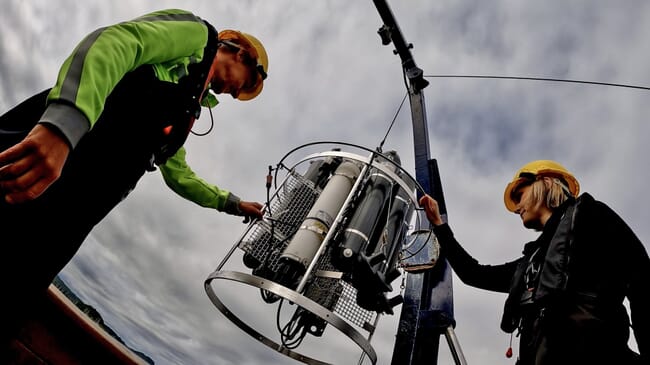
© SAMS
Organised by the Scottish Association for Marine Science (SAMS) and supported by the Sustainable Aquaculture Innovation Centre (SAIC), the workshop heard how technology is changing the way sea lice can be monitored and detected.
The workshop was part of the annual Marine Alliance for Science and Technology Scotland (MASTS) Science Conference in Glasgow.
The knowledge gaps that need to be filled
The sea louse, Lepeophtheirus salmonis, is one of the major challenges facing salmon farming in Scotland, but there is currently limited knowledge on the life cycle and distribution of this organism.
SAMS marine biologist Dr Helena Reinardy, who chaired the event, said: “Sea lice is arguably the biggest issue in Scottish aquaculture and, with the adoption of the new sea lice regulatory framework this year, the issue needs to be better understood across research, policy, regulatory and industry sectors.
“As well as being a welfare issue for farmed fish, we need to better understand sea lice larvae distribution in the water to assess potential impacts on the surrounding environment.
“Through this workshop we’ve been able to get various stakeholders together to explore this issue in detail and to share the latest developments in research, including underwater laser holography, eDNA, artificial intelligence and fluorescent microscopy.”
Speakers included: Dr Kim Last of SAMS; Dr Thangavel Thevar, University of Aberdeen; Dr Lionel Camus, Akvaplan-niva; Prof Martin Llewellyn, University of Glasgow; Prof James Bron, University of Stirling; and Dr Alistair Duguid, Scottish Environment Protection Agency.
Dr Last said: “Sea lice are a huge problem for the salmon farming industry and a lot of money has been spent on mitigating this fish welfare issue.
“There are moves towards more closed farming systems, but these systems will still need to source water from the sea. This makes it really important to understand the behaviour of sea lice larvae in the wild, specifically when and where they occur in the water column, which is challenging given their rarity.
Research organisations like SAMS are working on better monitoring methods, but input from the various stakeholders art this workshop will be invaluable as we seek more collaboration to solve this major challenge.”
Meanwhile, SAMS has been trialling new methods of detecting sea lice larvae in the water column. The team has been expanding its expertise in sea lice research, from microscopic analysis to field capturing techniques.
Peter Pollard, head of ecology at the Scottish Environment Protection Agency, said: As Scotland’s lead environmental regulator responsible for managing interactions between sea lice from fish farms and wild salmon and sea trout, we welcome scientific innovation aimed at cost-efficiently and accurately detecting and monitoring infective-stage sea lice in the sea.”




